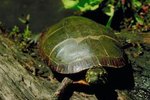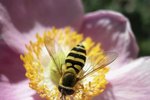
Crocodiles are native to North America, Central America, Africa, Australia and Asia. The large reptiles are present in fresh and saltwater environments. Mating habits are similar throughout the distribution, but some variables affect the season and duration of mating. Mating habits also vary slightly between captive and wild populations.
Breeding Seasons
The breeding season varies based on the type of crocodile and geographical location. Freshwater crocodiles breed during the dry season. The season is mid-summer in the southern hemisphere and mid-winter in the northern hemisphere. Saltwater crocodiles breed during the opposite wet season. Crocodile breeding in captivity does not follow the exact same cycle but it comes close. Typically, captive crocodiles will breed within one month of their wild counterparts.
Sexual Maturity
Crocodiles have a long lifespan and do not breed until sexual maturity. Maturity is determined by age and size. According to the Western Australia Department of Fisheries, male crocodiles are sexually mature when the snout reaches 160cm and females at 110cm. Freshwater crocodiles are not as large and males reach maturity at 2 meters in length, females at 1.5 meters.
Mating Rituals
The breeding process begins with mature males staking out territory. The males will posture and define their area. In rare instances, they will actually fight over territory. After territory and dominance are settled, males will approach females and gently rub head to head. Both the male and female are vocal, and the female ultimately determines the appropriate mate. After the introduction and rubbing, the female will either swim away or raise her body to encourage copulation. The male then mounts the female and proceeds with copulation to fertilize the eggs.
After Copulation
After copulation, the female must deposit the eggs. Freshwater crocodiles dig the nest in sandy soil. The dry season allows for egg burial. Saltwater females build a nest above ground using vegetation and sticks. The raised nest is necessary to protect the eggs from high water during the wet season. The females remain close to the nest until the eggs hatch.
References
Photo Credits
-
Digital Vision./Digital Vision/Getty Images
Writer Bio
Zach Lazzari is a Montana based freelance outdoor writer and photographer. You can follow his work at bustedoarlock.com.



